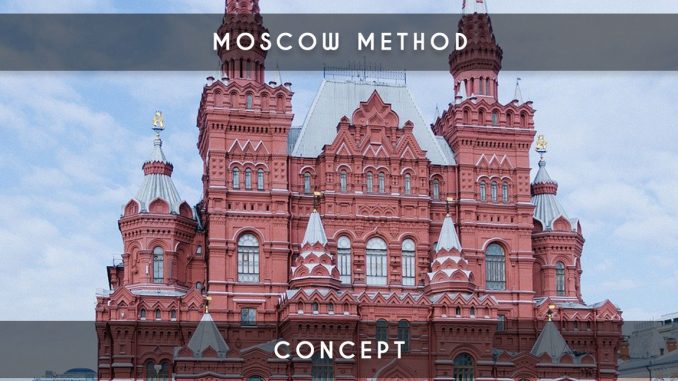
The MoSCoW method is a prioritization technique that will prioritize the needs and requirements of a project often in IT. In Scrum, the Product Owner and the business often put it in place.
What is the MoSCoW method?
This word MoSCoW referring to the beautiful Russian capital is an acronym for the following words:
- M for must have if; what needs to be done
- S for should have this if it’s all possible; what would be nice to be done if it’s possible
- C for could have this if it does not affect anything else; what should be done if there is no impact with other requests
- W for won’t have this time but would like in the future; to do if you have time one day
We add the “o” to the acronym to make the acronym pronounceable. It would be otherwise complicated to pronounce method “MSCW” instead of MoSCoW method.
Apply the MoSCoW method to the Agile world
In some contexts, the MoSCoW method can really bring a lot to prioritization.
The number of applications in companies is often totally disproportionate to the capacity to make of the technical teams. And there are impacts when we do not control business emergencies.
The Product Owner (in Scrum) or the Project Manager / AMOA will gather together the customers and the technical teams (trades) to ask them to define a status for each functional request.
It is often nice to use small circles of stickers to stick on the post’it corresponding to the functional requests so that the status is clearly visible by everybody following the meeting:
- M represented by a red circle
- S represented by a yellow circle
- C represented by an orange circle
- W represented by a green circle

In Scrum, the Product Owner does this exercise if he needs it during the prioritization meeting.
In one or many complete projects, it is impossible to have everything in “must have if” and it would be even worrying not to have requests in the two last categories. The facilitator of the meeting will have the difficult task of making it clear to the customers in order to have a good distribution of the status of all requests. In general, doing this prioritization together is often very beneficial and opens to constructive discussions.
In case of conflicts between different business on a request, the facilitator will invite them to talk about it after and to leave the priority of the request pending; otherwise the meeting may be disrupted.
Conclusion MoSCoW method
If the MoSCoW method is relatively simple to use, it can be very useful when the number of applications is huge and it becomes difficult to prioritize the whole.
Why not use this MoSCoW method? Do you use another method similar at MoSCoW method?




1 Trackback / Pingback